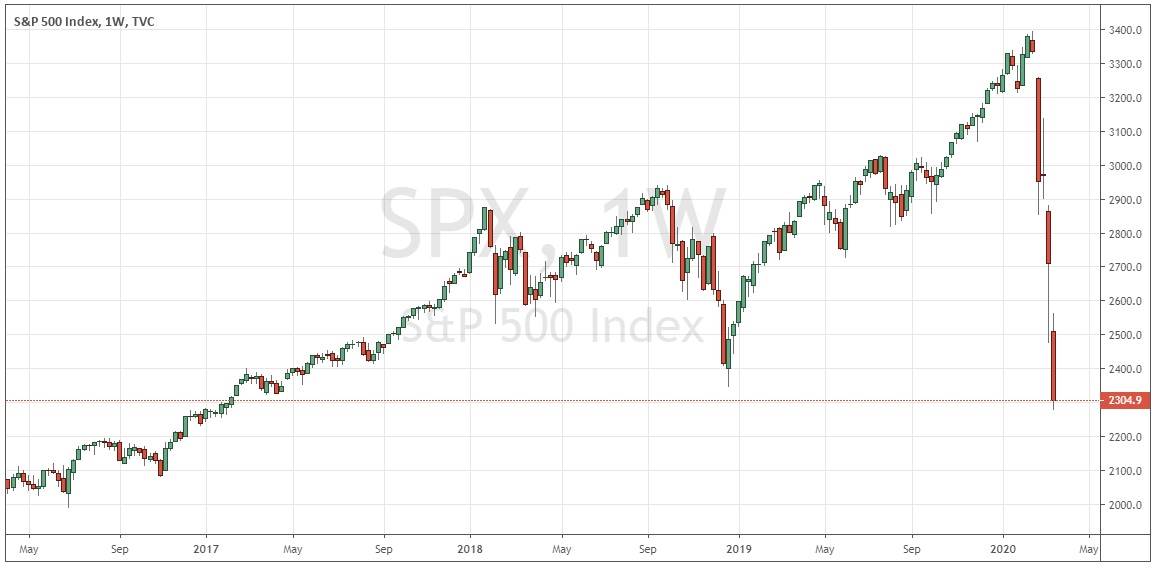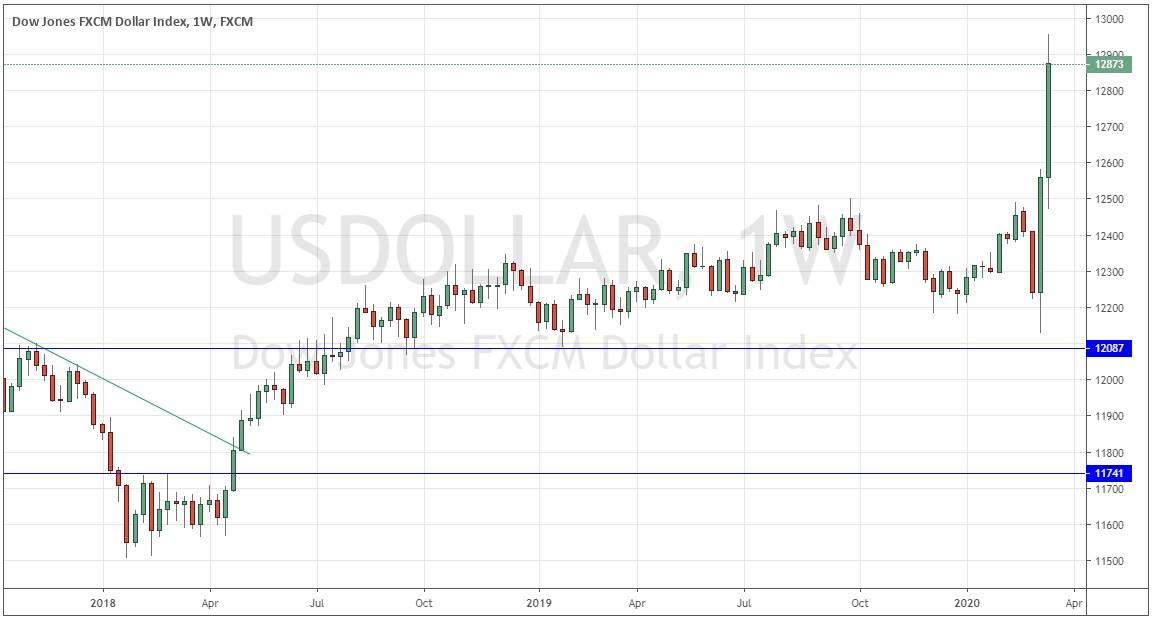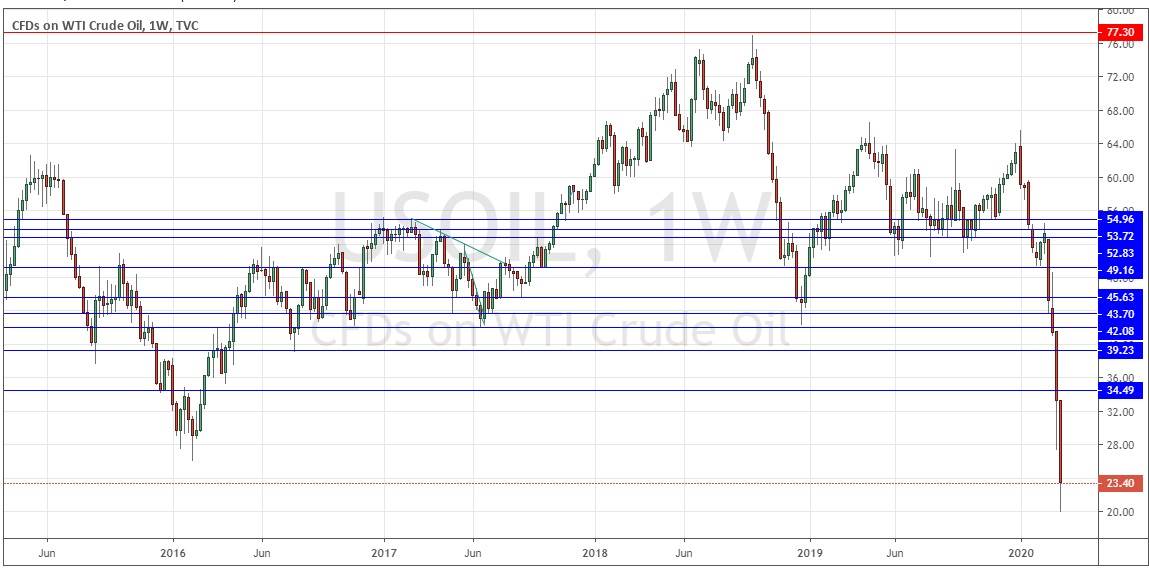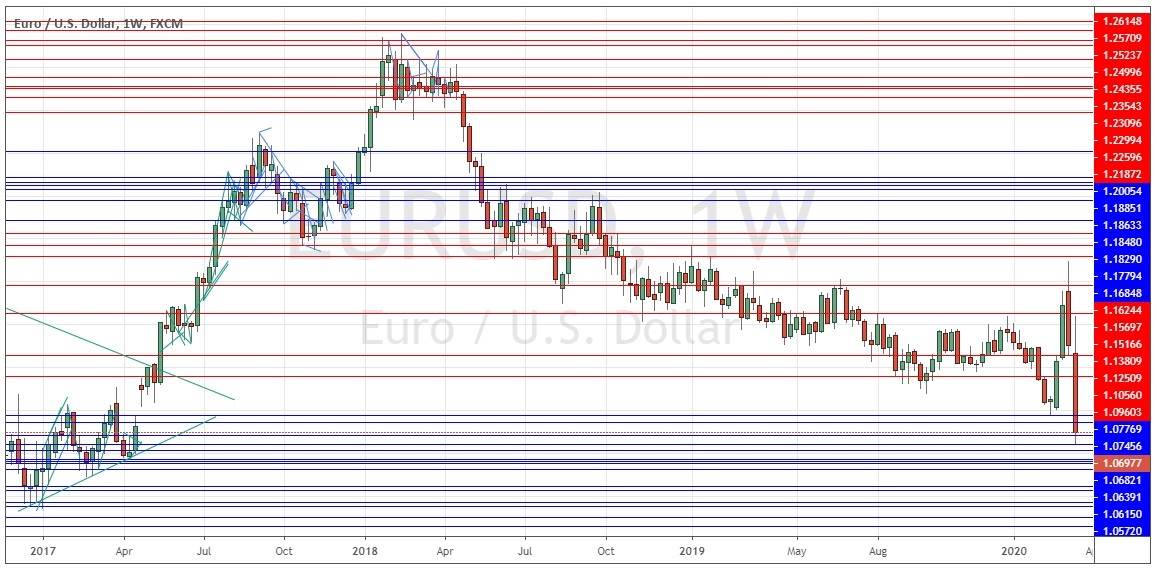The difference between success and failure in Forex trading is very likely to depend upon which currency pairs you choose to trade each week, and not on the exact trading methods you might use to determine trade entries and exits. Of course, the current market environment is one of crisis and very high volatility, and price movements are entirely dominated by the economic impact of the coronavirus pandemic. That is the dominant factor to consider in trading any market today.
Big Picture 22nd March 2020
In my previous piece last week, I forecasted that the best trades were likely to be short of the GBP/USD currency pair and short of the DAX stock market index. Over the week, GBP/USD fell in value by 5.04% and the DAX rose by 2.30%, so the average win here was 1.37%.
Last week’s Forex market again saw the strongest rise in the relative value of the U.S. Dollar, and the strongest fall in the relative value of the Australian Dollar.
Fundamental Analysis & Market Sentiment
The world is not coming to an end, but we are living in an extraordinary time of global health crisis, the type of which has not been seen in one hundred years. There is a great deal of fear and panic, but it is important to remember that the evidence shows that the vast majority of people are going to be OK.
In time such as these, it is extremely difficult to make very short-term market forecasts, as the crisis can change focus day by day, strongly affecting sentiment and market movements. However, medium-term forecasts are easier to make as we are seeing very strong momentum in price movements.
We have seen the epicenter of the global pandemic move into Europe, with Italy, Spain, Germany and France severely affected, and several countries now imposing measures of semi-lockdown.
Almost all stock markets are now in technical bear markets (decline of more than 20% from peak). However, short selling has been banned in France, Spain and Italy which may provide a floor in these markets, at least temporarily. The major U.S. stock market indices, the S&P 500 and the Dow Jones Industrial Average, still look very weak. However, the U.S. political system may be close to approving a $1 trillion stimulus package which might stop the bleeding when approved.
It is clear that this crisis will enforce severe economic restrictions in all affected countries which will need to last for several weeks or even months. The only given is that stock markets and GDP generally will take severe hits, with Goldman Sachs now forecasting a 24% drop in U.S. GDP. We have already seen emergency rate cuts in several countries and there may be even more ahead. The stock market crash we are seeing is comparable to 2008 and even 1929 so far.
It seems clear that we will see a continued level of high market volatility. Prices are likely to depend upon how the U.S.A. and European nations cope with the spread of the virus, and whether there are any signs of successful containment as we seem to have seen in China, South Korea, Singapore, and Hong Kong.
Technical Analysis
U.S. Dollar Index
The weekly price chart below shows last week printed a very large bullish candlestick which closed not far from the high of its range. It made a new 17-year high price. These are very bullish signs. It seems that the current global crisis is producing a rush into the USD as a safe haven. Overall, it seems likely that the U.S. Dollar will rise further over the coming week.
S&P 500 Index
The major U.S. stock market index – the biggest market index in the world – again fell sharply and ended at its lowest weekly close in three years. It is down by more than 32% from its all-time high made just five weeks ago. We may see a bullish bounce when the U.S. administration and congress finally agree an estimated $1 trillion stimulus and bailout package, but the worsening, Great Depression-like situation regarding demand and output means that any bullish retracements will be likely to be good selling opportunities over the coming week.

WTI Crude Oil
WTI Crude Oil again fell sharply and ended at its lowest weekly close in 18 years. We may see a bullish bounce when the U.S. administration and congress finally agree an estimated $1 trillion stimulus and bailout package, but the worsening, Great Depression-like situation regarding demand and output globally, and not just in the U.S., means that any bullish retracements will be likely to be good selling opportunities over the coming week.
EUR/USD
The EUR/USD currency pair fell strongly towards the end of last week, closing near the low of its range at a 2.5 year low. The Eurozone is now the global epicenter of the coronavirus pandemic, and this pair tends to trend quite reliably when it breaks to new long-term highs or lows. It looks likely that the price will fall further over the course of next week. Volatility is very high.
Conclusion
This week I forecast the best trades are likely to be short of the S&P 500 Index, WTI Crude Oil, and the EUR/USD currency pair.




